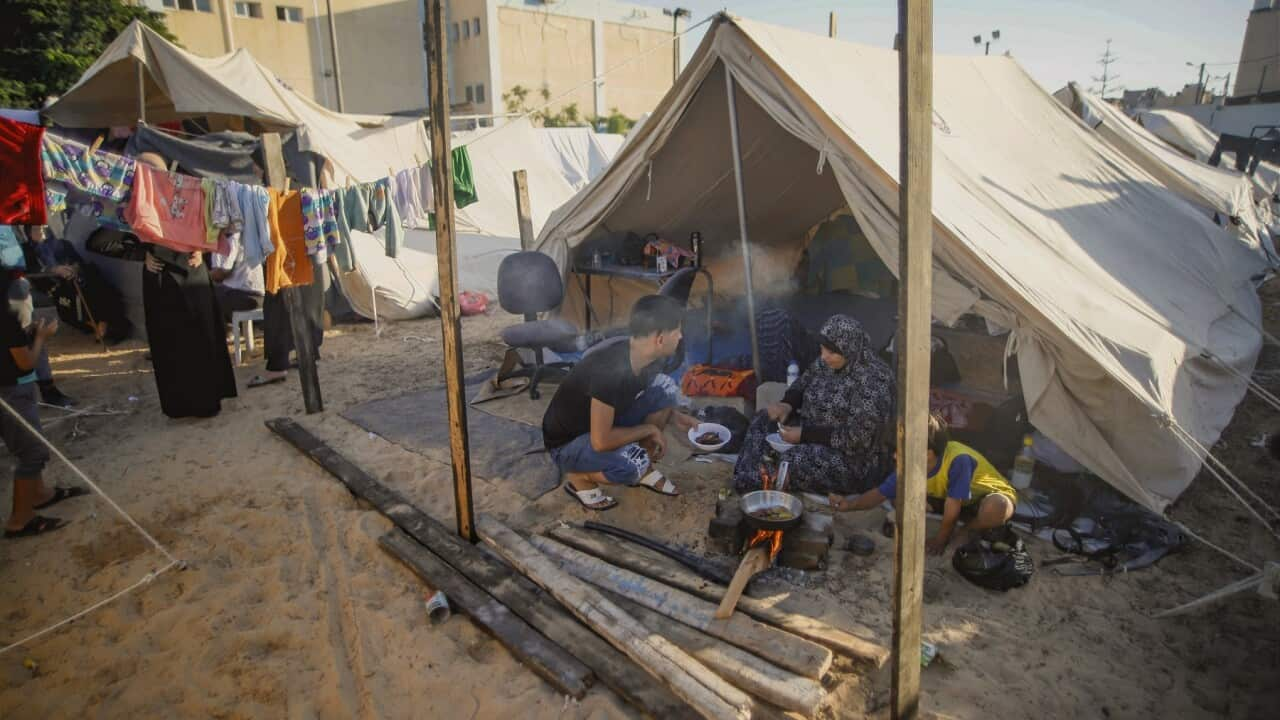Key Points
- The United Nations has recorded the highest number of refugees since registering data in 1975.
- Conflicts across three different continents have driven the number of people fleeing war and persecution.
- Australia has pledged to increase its humanitarian response, boosting the number of refugees it will resettle in 2023-2024.
A new record of more than 114 million refugees are fleeing violence and war as conflicts continue across three continents.
The United Nations High Commissioner for Refugees (UNHCR), Filippo Grandi, estimated this week that one in every 73 people worldwide have been displaced from their homes.
Grandi said the international community's "inability to solve conflicts or prevent new ones" was driving the high number, which has more than doubled in the last decade.
The agency said 1.6 million people applied for asylum in the first six months of 2023, with an estimated 4 million people displaced between June and September.

Source: SBS News
“As we watch events unfold in Gaza, Sudan and beyond, the prospect of peace and solutions for refugees and other displaced populations might feel distant,” Grandi added.
“But we cannot give up."
Why is the number of refugees so high?
The UN Refugee Agency's listed violence in Ukraine, Syria and Afghanistan as the main causes of displacement in the first half of 2023.
More than 11 million Ukrainians were forced to flee their homes during the war with Russia, with 5.7 leaving to neighbouring countries.

The agency found 75 per cent of those displaced were hosted by low and middle-income countries.
Australian Refugee Council CEO Paul Power said it's important Australia is "sharing the responsibility" and doing as much as possible to help.
"Not only to provide options elsewhere for people who need them, but actually also to demonstrate to countries which are hosting significant numbers of displaced people that," he said.
How many refugees is Australia resettling?
During the 2022 election campaign, Anthony Albanese pledged to increase Australia's humanitarian program to 27,000 places annually and 5,000 community-sponsored places.
Australia's humanitarian intake will rise to a 10-year high in 2024 after
The number of refugees Australia will resettle under the program will rise from 17,875 to 20,000 people each year.
Giles said the 11 per cent increase showed the Albanese government was "stepping up" to help address a global humanitarian crisis.
"This responsibility extends beyond their arrival, by providing robust support to refugees to ensure they are well equipped to settle into Australia and rebuild their lives with certainty," he said in August.
Jane McAdam, director of the Kaldor Centre for International Refugee Law at the University of New South Wales, said Australia had obligations to refugees under international law.
"Countries like Australia have very well-defined legal obligations under the Refugee Convention, and human rights treaties," she said.
"[They] preclude us from returning people to situations where they face a well-founded fear of persecution, or a real risk of other serious forms of harm."

The government has approved thousands of visas since initially evacuating 6,500 people during rescue missions from Kabul after the Taliban's takeover of Afghanistan in 2021. Credit: LACW Jacqueline Forrester/AP
The places for those from Afghanistan were announced in the federal budget in the wake of after United States forces left.
Community organiser at the Asylum Seeker Resource Centre, Saajeda Samaa, fled Afghanistan in 2010 said the process of seeking asylum can be dehumanising.
She said as well as focusing on boosting numbers, the government needs to work harder not to create new trauma for people fleeing conflict zones.
"You feel like an alien who has just landed on a different planet. It was safe physically for sure but mentally so confusing including the legal system, the social services, and finding your identity," she told SBS News.
"People don't know you, what visa you're on, they don't understand, and in the end you are just an ineligible person, and that was my title in the process of seeking asylum, ineligible, for anything and everything."



